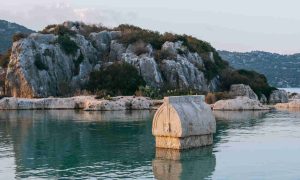In what is now Turkey there have been many important cultures and civilizations. But there is one that perhaps does not receive as much attention as others, although it deserves it because of the hegemonic role it played in its time. We are talking about the Hittite civilization in Turkey, of which there are still vestiges that can be visited. Here we tell more about it, of interest to lovers of archeology and the ancient world. And for them we can organize excursions focused on this interesting civilization.
Who were the Hittites
The Hittites were a people who lived for about five centuries in the heart of Anatolia, during the second millennium B.C. Probably coming from the other side of the Black Sea, they settled about 200 km from the current Ankara in the XVII century B.C. Over time, they grew in power until they became a hegemonic power that rivaled the Egypt of the Pharaohs and the Middle Assyrian Empire.
They had their capital in Hattusa, although in its time of greater expansion (in the XIV century B.C., with the king Suppiluliuma I) it extended until the Bosporus by the west and until the border with the present Syria by the southeast. They had their own language, Hittite, which is considered the oldest known Indo-European language, with a cuneiform writing system.
For many, the Hittite empire is known for its confrontation with the Egypt of Ramses II in the famous battle of Qadesh, when Muwatalli II (son of Suppiluliuma I) was in command of the Hittites. It was 1274 BC and is considered to have ended in a draw, although Ramses II sold it internally as a victory, later building the temples of Abu Simbel. In addition, the peace treaty signed is considered the first in history, a great honor for this civilization of which much remains to be discovered. A treaty that, by the way, is preserved in the Archaeological Museum of Istanbul, very close to Hagia Sophia.
Where to learn more about the Hittites
Although much remains to be discovered about the Hittites, the good news is that many vestiges of that civilization are still preserved today. And there is nothing better than traveling to these places to immerse yourself in that era. A must is a visit to the capital, Hattusa, something feasible in a day trip from Ankara. In Hattusa remains of that city are still standing, with cyclopean architecture due to the large size of the ashlars used in its walls. Its most emblematic point is the Lions’ Gate, which gives a glimpse of the Assyrian influence in its art.
Hattusa is declared a Unesco World Heritage Site, as is a nearby site of great value: the rock sanctuary of Yazılıkaya. The meaning of the reliefs carved into the rock, such as the call of the 12 divinities of the underworld, is still being investigated, although elsewhere in the sanctuary gods such as Sarruma (of the mountain) and King Tudhaliya IV have been identified. In any case, the religion of this civilization has often received the name of ‘the religion of the thousand gods’, for its numerous deities, both their own and imported from other cultures.
Another of the great archaeological sites of the Hittites is Alacahöyük. Although there are remains of an earlier settlement, from the third millennium BC, most of the enclosure is dated to the Hittite period and its most imposing space is, again, the entrance gate, in this case flanked by sphinxes.
And of course, lovers of ancient history who wish to learn about the Hittite culture have an appointment with the Museum of Ancient Civilizations in Ankara: although there are authentic gems from earlier periods, for example from Çatalhöyük, other pieces of enormous value from Hattusa and Alacahöyük are also exhibited in contextualized form.



